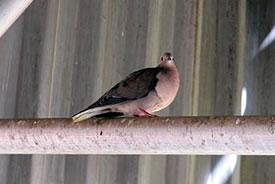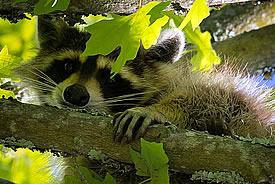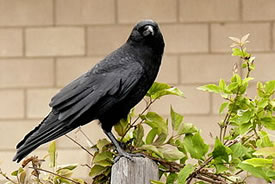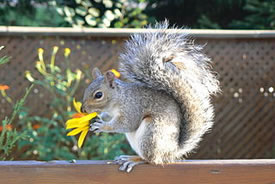Wild in the city: Some interesting facts about four of my favourite underappreciated city dwellers

Pigeon (Photo by Leoadec, Wikimedia Commons)
If you live in a big city like I do, it may feel like you have to venture far away to a conservation area to connect with nature. While it may even seem like there is nothing around but concrete and people, even big cities are bustling with wildlife once you start looking for it. Many of the species living in cities are considered pests or nuisances, but there is often more than meets the eye to our wild neighbours.
Here are some interesting facts about four of my favourite underappreciated city dwellers:
1. Pigeons
- Although there is such a thing as a wild rock dove, most of the city pigeons we see are actually feral descendants of domestic pigeons.
- Pigeons have a long history with humans. According to some estimates, they were domesticated more than 5,000 years ago, and introduced to North America 400 years ago.
- Known for their incredible navigational abilities, pigeons have often been used to deliver messages. In fact, 32 pigeons have received a Dickin Medal for their service as messengers during World War Two!
- Pigeons don’t mind roosting in cities, because the tall buildings mimic their natural nesting sites: cliffs and mountains.

Raccoon (Photo by Ken Thomas/Wikimedia Commons)
2. Raccoons
- Raccoons have extremely sensitive and adept paws, which allow them to find food in murky water in the wild. In the city, this comes in handy to open the various locks we place on garbage bins and doors.
- To reduce problems with raccoons, make sure to keep your garbage securely locked, clean up after barbeques and picnics and keep all pet food inside.
- Part of the reason why raccoons are successful city-dwellers is that they are active at night (when people are sleeping), and they can eat just about anything. Thanks to humans, there is often more food for raccoons in a city than there is in more rural habitats.
- According to Canadian Geographic Kids, "The raccoon’s English name comes from the Algonquian word arukan, meaning 'he who scratches with his hand.'"

Crow (Photo by Linda Tanner, Wikimedia Commons)
3. Crows
- Although the term "crow" actually refers to a whole genus, in North America, it is usually used when talking about the American crow.
- To tell the difference between crows and ravens, look for size, shape and sound. Ravens can be larger, with diamond-shaped tails, and can have a deep, croaking voice. Crows are smaller, with rounded tails, and make a higher-pitched cawing sound that most of us recognize. Ravens prefer more rural settings, so if you see a big black bird in the city, it’s likely a crow.
- Crows are some of the smartest birds in the world. There is an endless list of amazing things that crows are capable of, from making and using tools to teaching their young to recognize human faces.
- Their intelligence and omnivorous, opportunistic nature make crows well-suited for urban life.

Grey squirrel (Photo by Kevstan, Wikimedia Commons)
4. Tree squirrels
- There are four species of tree squirrels in Canada. Other members of the squirrel family include chipmunks, flying squirrels, marmots, ground squirrels and prairie dogs.
- Eastern grey squirrels are very adaptable. Although native to eastern North America, they have been highly successful in many of the places they have been introduced to, including Vancouver, Calgary, San Francisco and parts of Europe.
- A squirrels’ tail has many purposes: it is used for balance, communication and to keep warm (in the winter) or cool (in the summer).
- Squirrels are very agile and clever. They will hog the feed in any bird feeder they can get to, so try to make sure your feeders are squirrel-proof.
This is just a tiny sample of the wildlife I see almost every day. There are so many more birds, mammals, plants and insects that we share our cities with.
What kinds of plants and animals can you find in your neighbourhood? Head to your local park to spot even more wildlife and read up on some of the species you most commonly see. I’m sure you’ll be surprised at what you’ll find!


